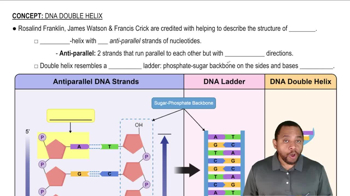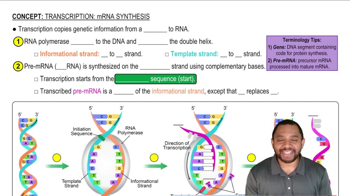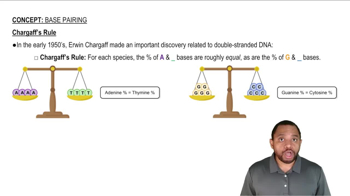Answer the following questions for the given section of DNA:
a. Complete the bases in the parent and new strands.
 Verified step by step guidance
Verified step by step guidance Verified video answer for a similar problem:
Verified video answer for a similar problem:



 6:37m
6:37mMaster Transcription: mRNA Synthesis Concept 1 with a bite sized video explanation from Jules
Start learning